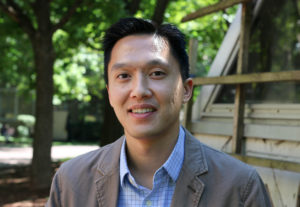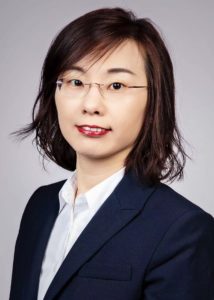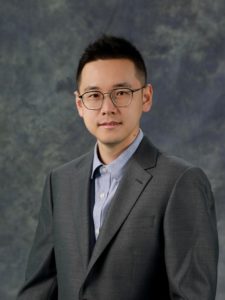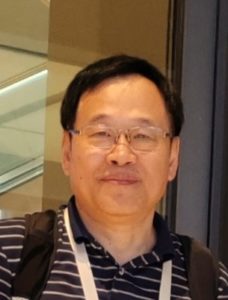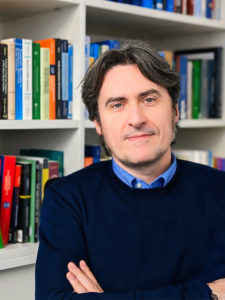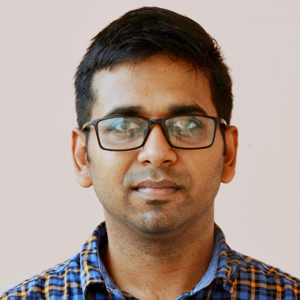 My research combines experimentation and theory, focusing on a broad spectrum of themes in hydrodynamics, soft and active matter. This includes hydrodynamic singularities in simple and complex fluids, rheology, and the collective behaviours of active matter systems. I received my PhD in 2016 from the University of Bordeaux in France and then worked as a postdoc in the Soft Matter group at the University of Amsterdam. Subsequently, I joined the Unilever Food Innovation Centre in the Netherlands, where I worked as a Marie Curie Fellow on the relationship between the rheology of foodstuffs and consumer perception. Since 2021, I have been leading my research group as part of the Soft Matter group in Amsterdam, where we investigate the physics of active polymers in various situations, and the rich behaviours that emerge from their collective interactions.
My research combines experimentation and theory, focusing on a broad spectrum of themes in hydrodynamics, soft and active matter. This includes hydrodynamic singularities in simple and complex fluids, rheology, and the collective behaviours of active matter systems. I received my PhD in 2016 from the University of Bordeaux in France and then worked as a postdoc in the Soft Matter group at the University of Amsterdam. Subsequently, I joined the Unilever Food Innovation Centre in the Netherlands, where I worked as a Marie Curie Fellow on the relationship between the rheology of foodstuffs and consumer perception. Since 2021, I have been leading my research group as part of the Soft Matter group in Amsterdam, where we investigate the physics of active polymers in various situations, and the rich behaviours that emerge from their collective interactions.
Find more about Antoine’s work via:
Group website: Deb’Lab (deb-lab.com)
@AntoineDeblais
Read Antoine’s Emerging Investigator article http://xlink.rsc.org/?doi=10.1039/D3SM00542A
How do you feel about Soft Matter as a place to publish research on this topic?
Soft Matter has established itself as a journal within the realm of soft active matter research, bridging the gap between soft matter physics, chemistry, and biophysics. Given the interdisciplinary nature of our work in collaboration with Saad Bhamla’s group, which explores this innovative class of living particles, we believe that Soft Matter is the ideal platform to disseminate our findings. Our research not only appeals to those in the classical polymer physics community but also captivates the interest of individuals exploring the fascinating intersections of active matter and biophysics. As such, we feel that our contributions will find a receptive and engaged audience among the diverse readership of Soft Matter.
What aspect of your work are you most excited about at the moment and what do you find most challenging about your research?
We are currently very excited about our pioneering work introducing these novel living polymer-like particles as an experimental platform for exploring fundamental questions on active polymers. The lack of experimental systems available for active polymers, especially ones available in substantial quantities, makes our research particularly exciting. These living worms exhibit a captivating array of characteristics, and we believe there is still much to uncover in this area.
What we find most challenging about our research is broadening our reach to engage a wider audience of soft matter physicists. While we have demonstrated the suitability of these systems for addressing fundamental questions related to active polymers, expanding our impact and dissemination of findings within the soft matter community remains a current challenge. Nevertheless, we are enthusiastic about the potential to bridge well-established theories for passive polymers with the unique framework provided by these living particles, paving the way for further advancements in our understanding of active polymers.
In your opinion, what are the most important questions to be asked/answered in this field of research?
In my opinion, the field of active matter research should prioritize addressing two critical questions. First, understanding how interactions and activities among individual particles lead to emergent behaviours and properties is central not only to our field but also to unravelling the unique characteristics of biological tissues, cells, and life itself. Second, within the domain of active flexible polymer systems, identifying the fundamental principles and mechanisms responsible for emergent behaviours represents a significant yet unanswered question. Particularly the combined role of activity and topology. These questions form the foundation for advancing our comprehension of complex systems in both biological, synthetic and robotics contexts.
Can you share one piece of career-related advice or wisdom with other early career scientists?
Here’s a piece of (modest) career-related advice for fellow early-career scientists: foster your creativity and wholeheartedly believe in what you do. With patience and perseverance, your research efforts will yield valuable results over time. Additionally, don’t hesitate to seek guidance and mentorship from more experienced and senior scientists. Their insights, advice, and constructive feedback can be invaluable on your journey. Building these mentorship relationships can provide valuable direction and accelerate your professional growth.











